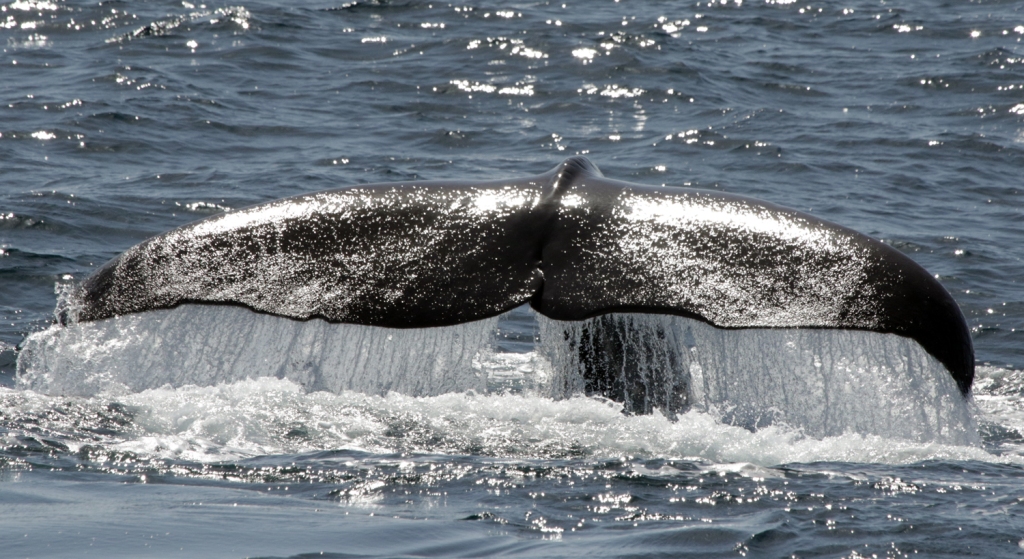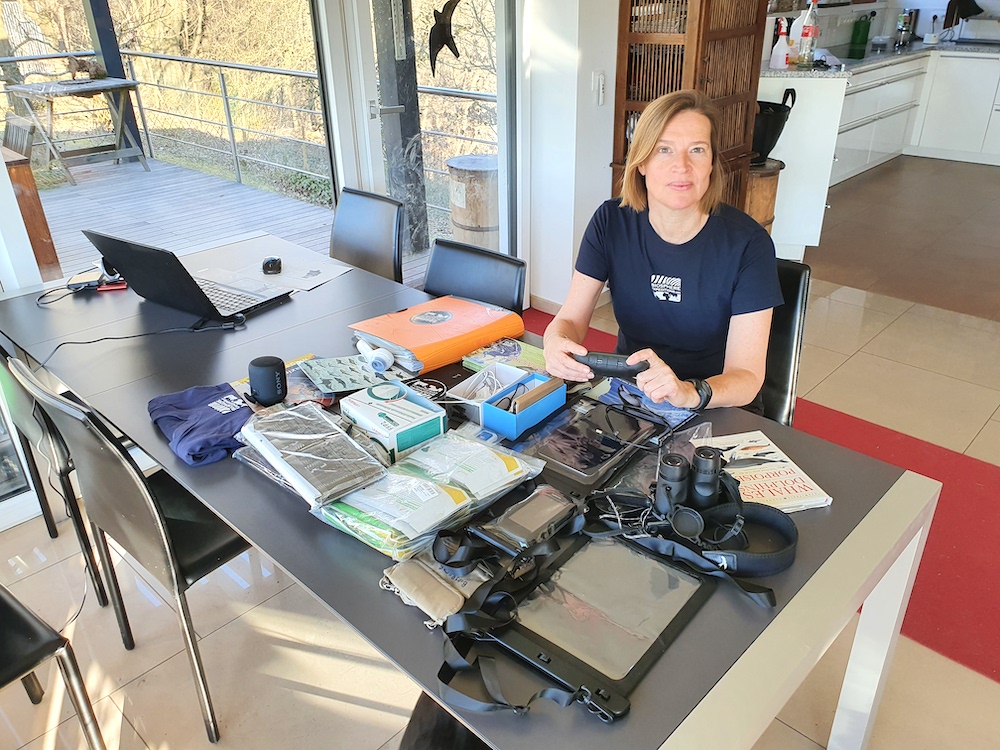Monday was without a doubt one of the highlights of group 1. The day started out quite hazy but with calm seas and blue sky. We decided to explore the area north of Faial as the ‘vigia’ lookouts on land had spotted false killer whales. Scientists think this species is at least semi-resident around the archipelago as some individuals have been resighted several times, so it is important to get more data, including shots of their dorsal fins, so we were on a mission.
Thanks to the instructions from the vigias on the radio and the concentration of our dolphin citizen scientists on the front deck, it did not take long before we spotted them and they gracefully joined us at the bow, allowing us to take a closer look and we could even hear their wistles. These large torpedo-shaped dolphins are quite impressive and swim very fast. Off in the distance we saw more splashes and it became clear that we had a group of about 75 false killer whales that was spread out over quite a large area. We decided to have a look at the front-runners and from a distance we could see many Cory’s shearwaters flying around, indicating that the false killer whales were feeding at the surface, probably on tuna, while the seabirds were feasting on the leftovers. We stayed with the mayhem for over an hour, making it one of those sightings we will not forget, resulting in a large number of photos.
We continued our journey and lowered the hydrophone into the water to eavesdrop on the cetaceans at depth. We could still hear the whistles of the false killer whales we left behind, clicks of multiple sperm whales and … one funky sound that cannot be mistaken for any other species, a singing humpback whale! One of our whale volunteers spotted our first sperm whale of the day that nicely fluked so we could get a shot. Not very far away, two more sperm whales were sighted, with a calf in the middle. As Lisa was explaining to us that the calf was suckling from its mother, it obligingly did. Social responsibility in sperm whales entails baby-sitting and suckling each other’s babies between mothers and aunts. And we were fortunate enough to witness it ‘live’!
As the two adults dove to greater depths to feed, we could see more blows nearby and were able to take more fluke shots. At one point Lisa enthusiastically shouted, it is number 19, a female sperm whale that was first sighted in 1987. Nr 19 is a Biosphere Expeditions groupie as she has been spotted on multiple expeditions. Nice of her to honour that tradition. Many more sperm whales were recorded – we were almost losing count – glady the dedicated GPS, Monicet app and data person recorded all the details. To conclude the day, we had a chorus line of five individuals fluking one after the other. Meanwhile our vocal humpback whale continued singing, but decided not yet to reveal its identity, hopefully in the next days.
On Tuesday the weather was rather unpredictable with limited visibility but the team was determined to collect more data. We tried to look for Risso’s dolphins and the larger baleen whales, but they were not so cooperative. The common dolphins were of course at their daily appointment, which is always nice and a loggerhead also popped up its head next to the boat. This is how it goes with field research: you get days where there is cetacean action everywhere and other days where they are harder to find. Sometimes you just gotto be in the right place at the right time. To end our last day at sea, Cesar, our skilled captain sailed close to the southern edge of Horta to show us the two craters of Monte Guia, caves filled with crabs and vertical cliffs with seabirds.
Once back on land, our whale and dolphin volunteers enjoyed a nice meal at Casa de Cha that included a debriefing of our work together summarised in the infographic below.
Many thanks to Group 1 for the hard work, good sense of humor and great team spirit. We wish you safe travels back home. Lisa and I look forward to welcoming Group 2 in Banana Manor this Friday 1st April between 12:30-13:30, so we can get started promptly at 14:00 with the first briefing.





































